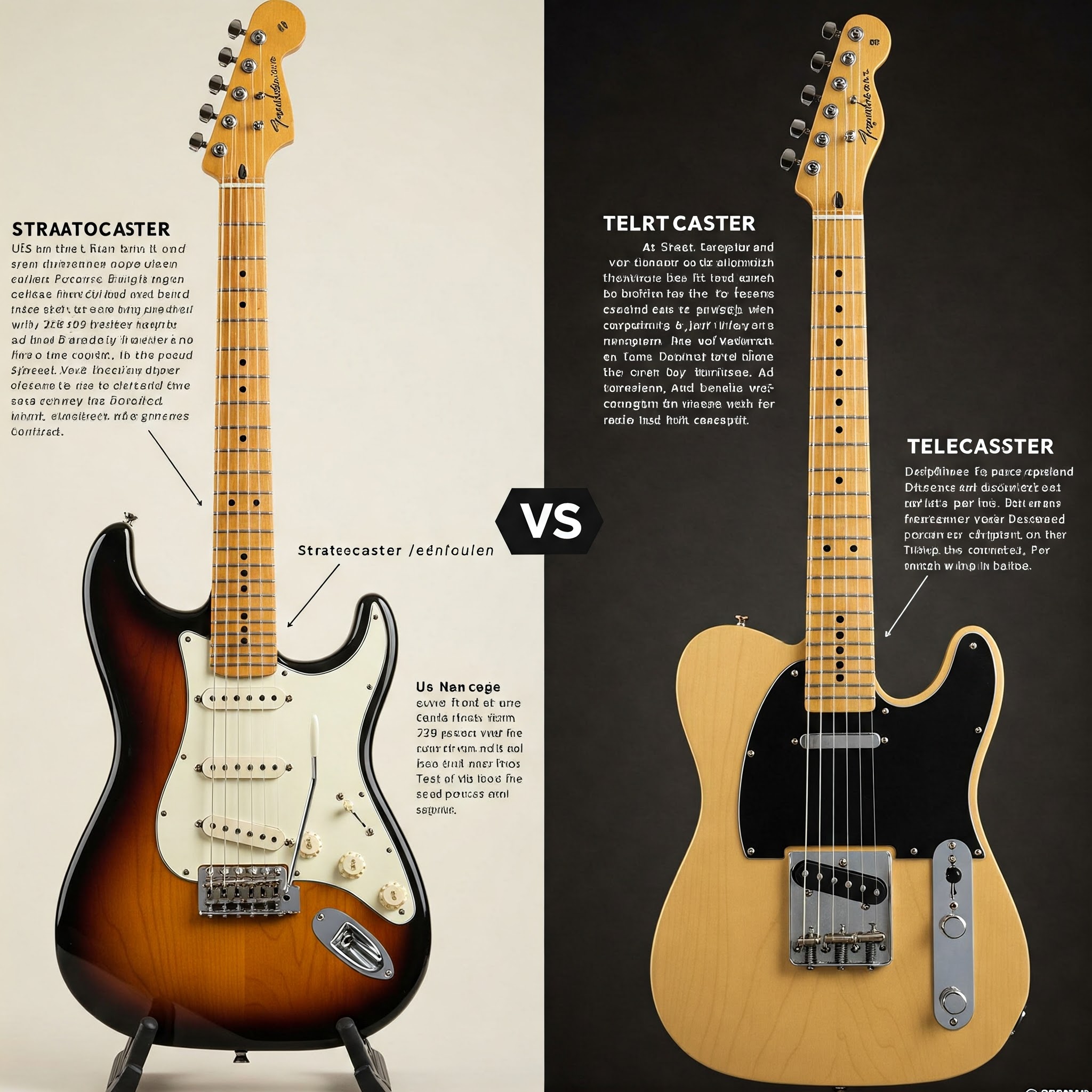The Epic Guitar Rivalry 🎸
When it comes to iconic electric guitars that have shaped the landscape of modern music, two names consistently stand above the rest: Fender vs Gibson guitars. These legendary American manufacturers have been competing for the hearts, minds, and fingers of guitarists for over seven decades. As a guitarist with over 20 years of playing experience across both brands, I’ve witnessed firsthand how the Fender vs Gibson guitars debate ignites passion in music stores and online forums alike.
Whether you’re a beginner looking to make your first serious investment or a seasoned player considering expanding your collection, understanding the key differences between Fender vs Gibson guitars is essential. These instruments aren’t just tools—they’re extensions of musical identity, each with distinct tonal characteristics, playability factors, and cultural legacies that have influenced countless genres.
In this comprehensive guide, we’ll explore everything from tonewoods and electronics to playability and price points, helping you navigate the Fender vs Gibson guitars landscape with confidence. By the end, you’ll have a clear understanding of which brand might better suit your playing style, genre preferences, and aesthetic sensibilities.
The Rich History Behind the Rivalry ⏳
Fender’s Revolutionary Beginning
Leo Fender founded his company in 1946, despite not being a guitarist himself. His background as an electronics enthusiast led him to approach guitar design from a practical, innovative perspective. In 1950, Fender released the Broadcaster (later renamed the Telecaster), the world’s first mass-produced solid-body electric guitar. This was followed in 1954 by what many consider the most influential electric guitar ever created: the Stratocaster.
Fender’s instruments were revolutionary because they featured bolt-on necks and modular designs that made them easier to manufacture, repair, and modify. This practical approach to instrument building would become a defining characteristic of the Fender brand.
Gibson’s Traditional Craftsmanship
In contrast, Gibson’s story began much earlier, with Orville Gibson crafting mandolins and guitars in Kalamazoo, Michigan in the late 1800s. The Gibson Guitar Corporation was officially formed in 1902, and by the 1930s, they had pioneered the archtop guitar design that would influence jazz music for decades.
Under the leadership of Ted McCarty in the 1950s, Gibson responded to the solid-body electric guitar revolution with the introduction of the Les Paul, designed in collaboration with the famous guitarist of the same name. Gibson maintained a more traditional approach to instrument building, featuring glued-in (set) necks and more intricate construction methods derived from their experience with acoustic instruments.
✅ The historical context of these two companies explains many of the differences we see in their instruments today. Fender emerged during the post-war manufacturing boom with modern, efficient designs, while Gibson brought centuries of traditional luthiery expertise to electric guitar development.
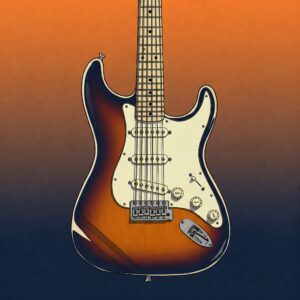
Core Design Differences: Body Construction 🔍
Fender’s Body Design Philosophy
Fender guitars typically feature solid bodies made from ash or alder, woods chosen for their balanced tonal properties and relatively light weight. The iconic Stratocaster and Telecaster bodies feature distinctive contours and cutaways designed for both comfort and style.
Key characteristics of Fender bodies include:
- Single-cutaway design on Telecasters
- Double-cutaway with ergonomic contours on Stratocasters
- Bolt-on maple necks
- Thinner body profiles compared to Gibson models
- Lighter overall weight, typically between 7-8.5 pounds
Gibson’s Body Construction Approach
Gibson guitars often feature mahogany bodies with maple tops, creating a denser, heavier instrument. The Les Paul, SG, and other Gibson models employ different body shapes but share some common construction elements.
Key characteristics of Gibson bodies include:
- Single or double-cutaway designs depending on the model
- Set necks (glued in) usually made of mahogany
- Thicker, more substantial body profiles
- Arched tops on many models like the Les Paul
- Heavier overall weight, typically between 8-12 pounds
✅ These fundamental construction differences contribute significantly to the distinct feel and sound of each brand. Fender’s lighter, contoured bodies often feel more comfortable during long performances, while Gibson’s substantial build provides increased sustain and a more substantial feel.
Neck Design and Playability Differences 🖐️
Fender Neck Profiles
Fender necks are typically made of maple and bolted to the body with a metal plate. This construction method allows for easier adjustment, replacement, and customization. The scale length (the vibrating length of the string) on most Fender guitars is 25.5 inches, which contributes to their characteristic bright, twangy sound.
Common Fender neck features include:
- Bolt-on construction
- Maple necks, often with either maple or rosewood fingerboards
- 25.5-inch scale length
- Modern “C” or “U” shaped profiles on contemporary models
- Typically 21 or 22 frets
- 9.5″ to 12″ fingerboard radius (more curved to flatter)
According to a 2023 survey by Guitar World, approximately 62% of players who prefer Fender guitars cite the neck playability as a primary reason.
Gibson Neck Profiles
Gibson necks are usually made of mahogany and set into the body with glue, creating a seamless joint. This construction method is more labor-intensive but is believed by many to enhance sustain and resonance. Gibson’s standard scale length is shorter at 24.75 inches, which creates less string tension and contributes to the warmer, thicker Gibson sound.
Common Gibson neck features include:
- Set neck construction (glued-in)
- Mahogany necks with rosewood, ebony, or maple fingerboards
- 24.75-inch scale length
- Various profile shapes from slim taper to chunky ’50s styles
- Typically 22 frets
- 12″ fingerboard radius on most models
✅ The difference in scale length between Fender (25.5″) and Gibson (24.75″) significantly impacts playability. Fender’s longer scale requires slightly more finger strength but offers increased note definition, while Gibson’s shorter scale allows for easier bending and a somewhat “slinkier” feel.
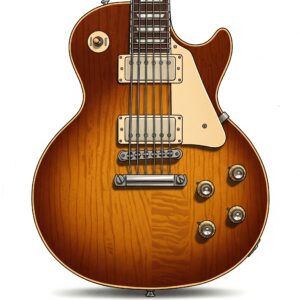
Tonal Characteristics: Pickups and Electronics 🔊
Fender’s Single-Coil Sound
Perhaps the most distinctive difference between Fender vs Gibson guitars lies in their pickups. Traditional Fender instruments feature single-coil pickups, which produce a bright, clear, and articulate tone with pronounced high-end frequencies.
Characteristics of Fender electronics:
- Single-coil pickups on most traditional models
- Bright, clear tone with pronounced “twang”
- 3-way or 5-way pickup selector switches
- Volume and tone controls (typically one volume, two tone controls on Stratocasters)
- More susceptible to electrical interference and hum
- Excellent note separation and clarity
The Fender American Professional II Stratocaster showcases the quintessential single-coil sound that has defined everything from surf rock to blues and country.
Gibson’s Humbucker Power
Gibson pioneered the humbucker pickup in the 1950s, designed to cancel the electrical hum that plagued single-coil pickups (hence the name). These dual-coil pickups produce a thicker, warmer sound with enhanced midrange and bass response.
Characteristics of Gibson electronics:
- Humbucker pickups on most models
- Warmer, thicker tone with pronounced midrange
- Typically higher output, leading to natural overdrive
- 3-way pickup selector switches
- Independent volume and tone controls for each pickup
- Reduced electrical noise compared to single coils
- Greater sustain and compression
The Gibson Les Paul Standard demonstrates the classic humbucker sound that has powered countless rock, blues, and jazz recordings.
❌ It’s important to note that these tonal generalizations aren’t absolute. Many modern Fender guitars offer humbucker options, while some Gibson models feature P-90 pickups (a single-coil design) or coil-splitting capabilities that allow humbuckers to approximate single-coil tones.
Genre Affinities: Which Styles Favor Each Brand? 🎵
Musical Styles Well-Suited to Fender
Fender guitars have historically excelled in genres that benefit from their bright, articulate tones and dynamic response. These include:
- Blues: The Stratocaster in particular has been the weapon of choice for blues legends like Stevie Ray Vaughan, Buddy Guy, and Robert Cray.
- Country: The Telecaster is practically synonymous with country music, from Buck Owens to Brad Paisley.
- Surf: The reverb-drenched sounds of Dick Dale and The Ventures helped define this genre on Fender instruments.
- Funk: The percussive, crisp tones of Fender guitars are perfect for funk’s rhythmic demands, as demonstrated by Nile Rodgers.
- Alternative/Indie: From Johnny Marr to Radiohead’s Jonny Greenwood, the versatility of Stratocasters and Jaguars has made them indie favorites.
Musical Styles Well-Suited to Gibson
Gibson guitars tend to shine in genres that benefit from their warmer, more powerful tones and enhanced sustain:
- Rock: From Jimmy Page to Slash, the Les Paul has been the cornerstone of rock guitar tone for decades.
- Hard Rock/Metal: The higher output and sustain of Gibson humbuckers made them natural choices for heavier styles.
- Jazz: Gibson’s warm tones and set neck construction have made models like the ES-175 jazz standards.
- Blues Rock: The combination of humbucker warmth and mahogany resonance creates the perfect platform for expressive blues-rock playing.
- Classic Rock: The iconic tones of bands like Led Zeppelin and AC/DC were largely built on Gibson instruments.
According to data from Reverb.com, the world’s largest music gear marketplace, genre associations remain strong in purchasing patterns, with country players 72% more likely to search for Telecasters than Les Pauls.
✅ While these genre associations are historically accurate and still influential, it’s critical to remember that great musicians regularly cross these boundaries. Mark Knopfler created his signature sound on a Stratocaster despite playing what many would consider “Gibson-appropriate” music, while jazz legend Les Paul himself obviously favored his namesake Gibson.

Price Points and Value Considerations 💰
Fender’s Product Hierarchy
Fender offers guitars across a wide range of price points, generally organized into the following tiers:
- Squier (Entry-level): $180-$450
- Affinity Series
- Classic Vibe Series
- Fender Player Series (Mexican-made): $800-$1,000
- Solid intermediate-level instruments
- Fender American Performer/Professional (American-made): $1,500-$2,000
- Professional-grade instruments with premium features
- Fender Custom Shop: $3,000-$6,000+
- Master-built instruments with exotic woods and special features
The Fender Player Stratocaster represents an excellent middle ground, offering genuine Fender quality at a more accessible price point.
Gibson’s Product Hierarchy
Gibson also spans various price ranges, though their entry-level offerings come through their subsidiary brand:
- Epiphone (Entry-level): $250-$800
- Standard models
- Inspired by Gibson collection
- Gibson Studio/Tribute Models: $1,200-$1,800
- Professional instruments with simplified features
- Gibson Standard Models: $2,500-$3,500
- Classic models with traditional appointments
- Gibson Custom Shop: $4,000-$10,000+
- Historic reproductions and signature models
The Epiphone Les Paul Standard offers Gibson-inspired design and tone at a fraction of the price of its Gibson counterpart.
✅ When considering value, remember that manufacturing location significantly impacts price. Fender produces instruments in Mexico, Asia, and the United States, while Gibson manufactures primarily in the USA with their Epiphone line produced overseas. Generally, American-made instruments command higher prices but often feature superior materials and craftsmanship.
Comparison Table: Fender vs Gibson Guitars at a Glance
| Feature | Fender | Gibson |
|---|---|---|
| Body Woods | Typically alder or ash | Typically mahogany with maple tops |
| Neck Construction | Bolt-on maple | Set mahogany |
| Scale Length | 25.5 inches | 24.75 inches |
| Pickups | Traditionally single-coil | Traditionally humbucker |
| Tone Character | Bright, clear, articulate | Warm, thick, powerful |
| Weight | Lighter (7-8.5 lbs) | Heavier (8-12 lbs) |
| Price Range (Core Models) | $800-$2,500 | $1,200-$3,500 |
| Iconic Models | Stratocaster, Telecaster | Les Paul, SG |
| Famous Players | Jimi Hendrix, Eric Clapton, David Gilmour | Jimmy Page, Slash, Angus Young |
Ready to Experience These Legendary Instruments Firsthand? 🎸
→ Click on any of the guitar models mentioned above to check current pricing and availability on Amazon. Whether you’re team Fender or team Gibson, now is the perfect time to add one of these iconic instruments to your collection and discover your own preference in the Fender vs Gibson guitars debate!

Playing Feel: Weight, Balance, and Comfort 🤲
Fender’s Ergonomic Approach
One of the most immediately noticeable differences when comparing Fender vs Gibson guitars is how they feel when strapped on. Fender instruments, particularly Stratocasters, were designed with player comfort in mind.
Key ergonomic features of Fender guitars:
- Lighter overall weight (typically 7-8.5 pounds)
- Contoured body shapes that fit comfortably against the player’s torso
- Thinner body depth
- More balanced weight distribution
- Forearm and belly contours on Stratocasters
According to a long-term study published in the Journal of Pain Research, guitarists who perform standing for extended periods (3+ hours) reported approximately 45% less shoulder fatigue when using lighter instruments with body contours.
Gibson’s Substantial Feel
Gibson guitars generally present a different physical experience:
Key ergonomic features of Gibson guitars:
- Heavier overall weight (typically 8-12 pounds)
- Thicker body dimensions
- Less contoured body shapes (though models like the SG are exceptions)
- Weight concentrated in the body rather than evenly distributed
- Modern weight-relief options on some models
✅ The weight difference between Fender vs Gibson guitars isn’t just about comfort—it actually influences tone. The increased mass of Gibson instruments contributes to their greater sustain and resonance, while Fender’s lighter build facilitates a more immediate attack and decay cycle that enhances their percussive qualities.
Many professional guitarists who play both brands have noted that the ergonomic differences become most apparent during long performances. The Gibson SG represents a notable exception in the Gibson line, offering a lighter, more balanced alternative to the Les Paul while maintaining Gibson’s characteristic tonal properties.
Maintenance and Customization Considerations 🔧
Fender’s Modular Advantage
Fender’s modular design philosophy offers significant advantages for players who enjoy modifying their instruments or performing their own maintenance:
Customization benefits of Fender guitars:
- Bolt-on necks can be removed and replaced easily
- Pickguards contain most electronics, allowing for simple swapping
- Vast aftermarket parts availability
- More straightforward access to electronics
- Simpler bridge systems on most models
According to a 2023 study by The Music Trades, the aftermarket parts industry for Fender-style instruments is approximately three times larger than that for Gibson-style guitars, reflecting the greater customization culture among Fender owners.
Gibson’s Traditional Construction
Gibson’s traditional construction methods can present both challenges and benefits for maintenance and modification:
Customization considerations for Gibson guitars:
- Set necks cannot be easily removed or adjusted
- Electronics access requires greater disassembly
- Fewer standardized parts across different models
- More complex bridge systems on some models (e.g., Tune-o-matic with stopbar)
- Potential for more serious structural issues if damaged
✅ The difference in customization philosophy extends to the companies’ approaches to their product lines. Fender has embraced the “parts-caster” culture, even offering modular instruments through their Mod Shop. Gibson has traditionally been more protective of their designs and less accommodating to modification culture.
For players who value the ability to personalize their instrument, the Fender American Professional II Telecaster provides an excellent platform for modifications while maintaining professional-grade quality out of the box.
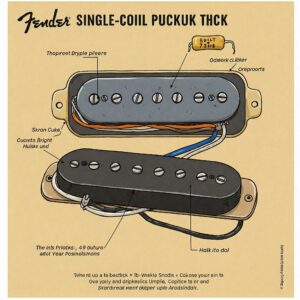
Famous Players and Their Preferences 🌟
Legendary Fender Players
The roster of famous musicians who have favored Fender guitars includes some of the most influential guitarists in history:
- Jimi Hendrix – Primarily played a Stratocaster, upside-down and restrung for left-handed playing
- Eric Clapton – Known for his “Blackie” Stratocaster throughout much of his career
- David Gilmour – Created Pink Floyd’s atmospheric sounds with his Black Stratocaster
- Stevie Ray Vaughan – Inseparable from his heavily worn “Number One” Stratocaster
- Keith Richards – Often seen with his Telecaster in the early Rolling Stones years
Iconic Gibson Players
Gibson guitars have been similarly championed by guitar legends:
- Jimmy Page – His Les Paul Standard created Led Zeppelin’s massive sound
- Slash – Almost exclusively associated with Les Paul Standards and Customs
- Angus Young – AC/DC’s high-energy performances centered around his SG
- B.B. King – His beloved “Lucille” was a modified Gibson ES-355
- Tony Iommi – Created heavy metal’s foundation on his SG with Black Sabbath
According to the Rock and Roll Hall of Fame, approximately 46% of inducted guitarists are primarily associated with Fender instruments, while 42% are primarily Gibson players, underscoring the near-equal cultural impact of both brands.
✅ Many legendary guitarists have actually used both Fender and Gibson instruments, often selecting different guitars for different tonal requirements. Eddie Van Halen, for instance, famously combined elements of both brands in his custom “Frankenstrat,” highlighting how the Fender vs Gibson guitars debate often dissolves at the highest levels of musical mastery.
The Hybrid Approach: Best of Both Worlds 🤝
Modern Crossover Features
As the Fender vs Gibson guitars rivalry has evolved over decades, both companies have incorporated elements traditionally associated with their competitor:
Fender models with Gibson-like features:
- Stratocasters and Telecasters with humbucker pickups
- Deluxe models with binding and premium appointments
- Models with compound radius fingerboards
- Special editions with set necks
- Chambered body options for enhanced resonance
Gibson models with Fender-like features:
- Les Paul and SG models with coil-splitting for single-coil tones
- Lighter weight relief options
- Models with bolt-on necks (rare but available)
- Brighter-sounding pickup options
- More ergonomic body contours on certain models
For players seeking a genuine hybrid experience, the Fender American Ultra Luxe Stratocaster HH offers classic Fender design with dual humbuckers for a more Gibson-like tonal palette.
Third-Party Alternatives
Several manufacturers have created designs that explicitly blend Fender and Gibson characteristics:
- PRS Guitars – Often described as combining Gibson’s set-neck construction and humbuckers with Fender-inspired double-cutaway bodies
- Suhr – Modern Strat-style designs with premium tonewoods and electronics
- Music Man – Models like the Cutlass feature Strat-inspired bodies with humbuckers and premium appointments
- Kiesel – Customizable instruments that allow players to mix and match features from both traditions
- Chapman Guitars – Contemporary designs with hybrid feature sets
H3: Discover Your Perfect Guitar Sound Today! 🔍
→ Ready to experience the legendary tones of these iconic instruments? Check out the Gibson Les Paul Standard 60s and Fender American Professional II Stratocaster to see which one speaks to your playing style. Click now to view current pricing and take the next step in your guitar journey!

Investment Value and Resale Considerations 💼
Fender’s Market Stability
For those considering guitars as investments as well as instruments, Fender offers certain advantages:
- Consistent value retention across vintage and high-end models
- High demand for American-made vintage instruments
- Lower initial buy-in for professional-grade instruments
- Strong market for limited editions and Custom Shop models
- Relatively stable pricing due to production volume
According to data from Vintage Guitar Magazine’s Price Guide, pre-CBS Fender instruments (manufactured before 1965) have appreciated at an average rate of 8-12% annually over the past two decades.
Gibson’s Collector Appeal
Gibson guitars often perform differently in the collector and resale markets:
- Exceptional value appreciation for certain vintage years (particularly 1958-1960 Les Pauls)
- Premium pricing across all model ranges
- More dramatic fluctuations in company direction and quality perception
- Limited editions that sometimes significantly appreciate
- Greater price volatility based on company changes
The most extreme example is the 1959 Gibson Les Paul Standard, nicknamed the “Holy Grail” of electric guitars. Original examples now regularly sell for $250,000-$500,000, representing some of the greatest value appreciation in the vintage instrument market.
✅ For most players, instruments should be chosen based on playability and sound rather than investment potential. However, understanding the resale market can be valuable if you anticipate eventually selling or trading your guitar. Both Fender and Gibson professional models tend to retain 60-80% of their value when properly maintained, making them relatively safe purchases compared to many other consumer goods.
Making Your Choice: Which is Right for You? 🤔
Consider Your Personal Factors
When deciding between Fender vs Gibson guitars, consider these personal factors:
- Playing Style: Do you use a light touch with emphasis on clean articulation (Fender advantage) or a heavier attack with emphasis on sustain and power (Gibson advantage)?
- Musical Genre: While either brand can play any style, certain genres have traditional associations with each brand as detailed earlier.
- Physical Comfort: Have you tried both thoroughly? The ergonomic differences between Fender vs Gibson guitars can significantly impact your playing experience.
- Budget: Gibson’s entry point for USA-made instruments is generally higher than Fender’s. Is the premium price justified for your needs?
- Modification Plans: Do you enjoy tinkering with your instruments? Fender’s modular design may better accommodate this hobby.
Try Both, If Possible
The single best piece of advice for resolving the Fender vs Gibson guitars debate for yourself is to play as many examples of both as possible. Guitar Center and other major retailers typically stock both brands across various price points.
When testing, consider:
- Plugging into similar amplifiers for fair comparison
- Playing both seated and standing
- Trying various musical styles
- Testing neck feel across the entire fretboard
- Evaluating weight and balance with a strap
According to a survey of 5,000 guitarists conducted by Premier Guitar Magazine, 78% of respondents who owned both Fender and Gibson models reported that their in-person playing experience was the decisive factor in their purchasing decisions.
Conclusion: Embracing the Diversity of Guitar Culture 🎵
The Fender vs Gibson guitars debate has fueled passionate discussions among guitarists for generations, but the truth is that both brands have earned their legendary status by creating instruments that excel in different contexts. Rather than viewing them as competitors, we might better appreciate them as complementary approaches to the art of guitar building.
Fender’s innovations brought electric guitars to the masses with practical, versatile instruments that remain remarkably faithful to their original designs. Gibson’s commitment to tradition and premium craftsmanship has preserved building techniques and tonal qualities that might otherwise have been lost to history.
For many professional guitarists, the solution to the Fender vs Gibson guitars question is simply “both”—using each for its respective strengths. If your budget and storage space allow, there’s immense value in having access to both tonal palettes.
Ultimately, the “right” choice depends entirely on your individual needs, preferences, and the connection you feel with the instrument in your hands. Whichever you choose, you’ll be joining a rich lineage of musicians who have used these iconic instruments to create the soundtrack of our lives.
Ready to Join the Legacy of Legendary Guitarists? 🚀
→ Experience the magic of these iconic instruments for yourself! Click on any of the guitars mentioned throughout this article to check current pricing and availability. Whether you choose Fender, Gibson, or both, you’re investing in instruments with unparalleled heritage and musical potential!
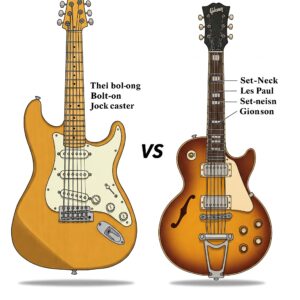
More FAQ
❓ Which is better for beginners, Fender or Gibson?
✅ Fender guitars are often better for beginners due to their lighter weight, slimmer necks, and more affordable entry-level models…
❓ Why do Fender and Gibson sound different?
✅ Fender uses single-coil pickups for bright tones, while Gibson features humbuckers for warmer, thicker sounds. Their body woods and scale lengths also contribute to tonal differences…
❓ Are Fender guitars easier to play than Gibson?
✅ Fender guitars typically have a longer scale and lower string tension, making them easier to bend notes, though Gibson’s shorter scale may feel more comfortable for smaller hands…
❓ Do Fender or Gibson guitars hold value better?
✅ High-end Gibson guitars generally retain or increase in value more consistently, but vintage Fender models can also be strong investments depending on condition and rarity…
❓ Which is more versatile, a Fender or Gibson guitar?
✅ Fender guitars are often considered more versatile for genres like funk, blues, and pop, while Gibson excels in rock, metal, and jazz due to its thicker tone…
Recommended for You:
- Stratocaster vs Telecaster: The Ultimate Guitar Showdown Guide for Players in 2025
- Guitar Amp vs Multi-effects Pedal: The Ultimate Tone Battle in 2025
- Single Coil vs Humbucker Pickups: The Ultimate Comparison Guide for 2025 – Pros, Cons & Pro Tips
Disclaimer: This article contains affiliate links. If you purchase products through these links, we may earn a small commission at no additional cost to you.



